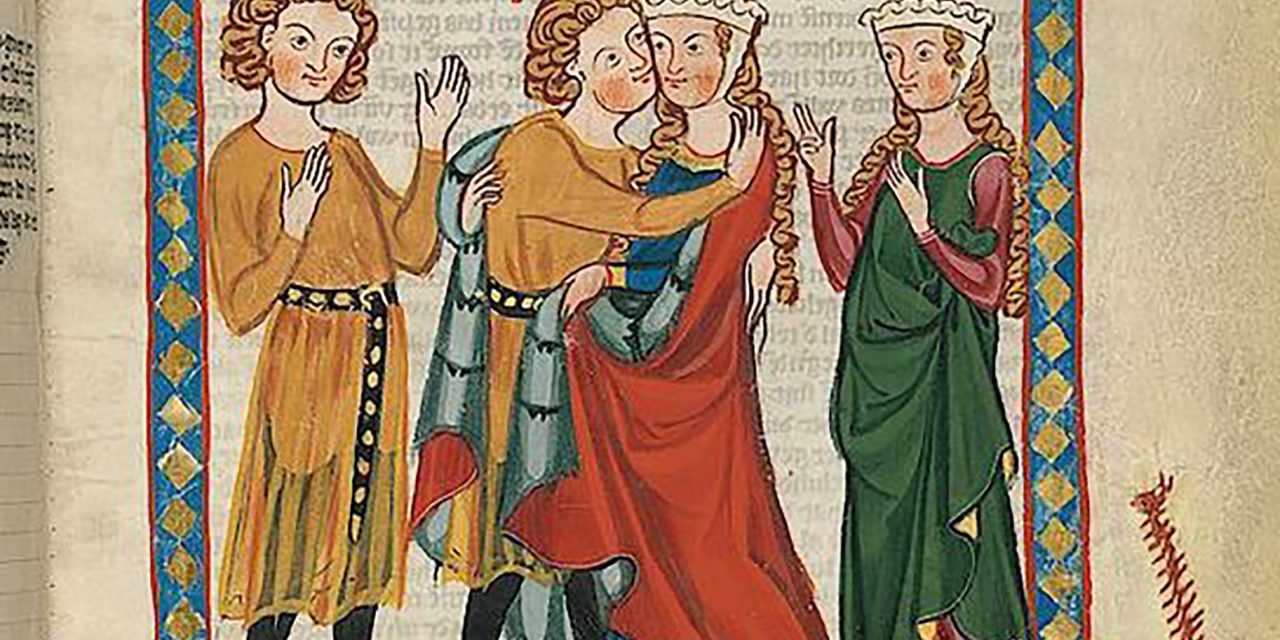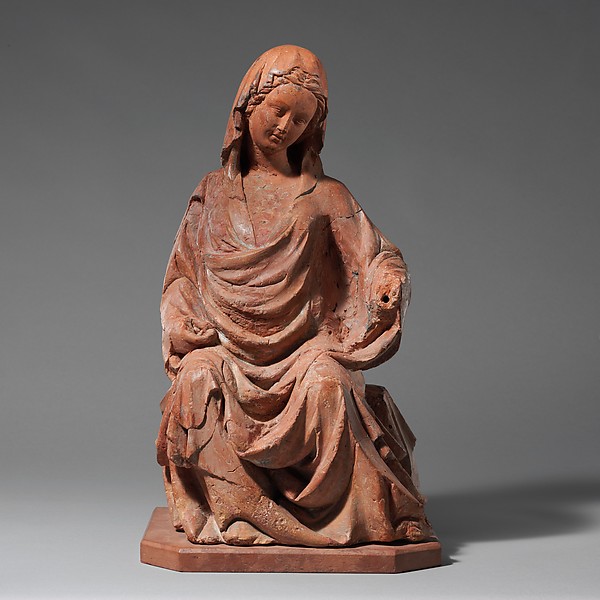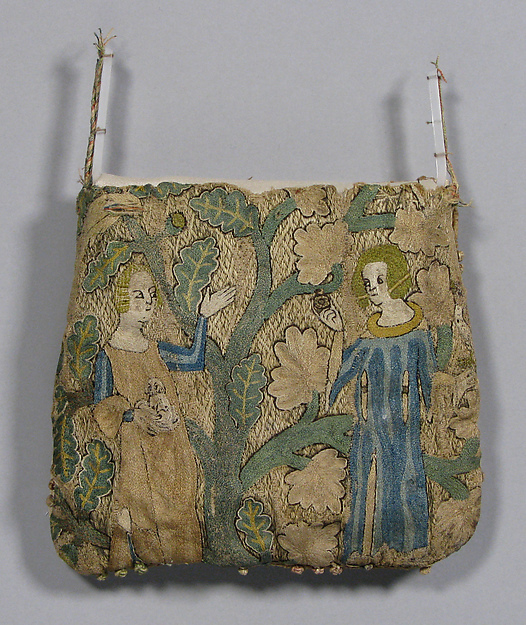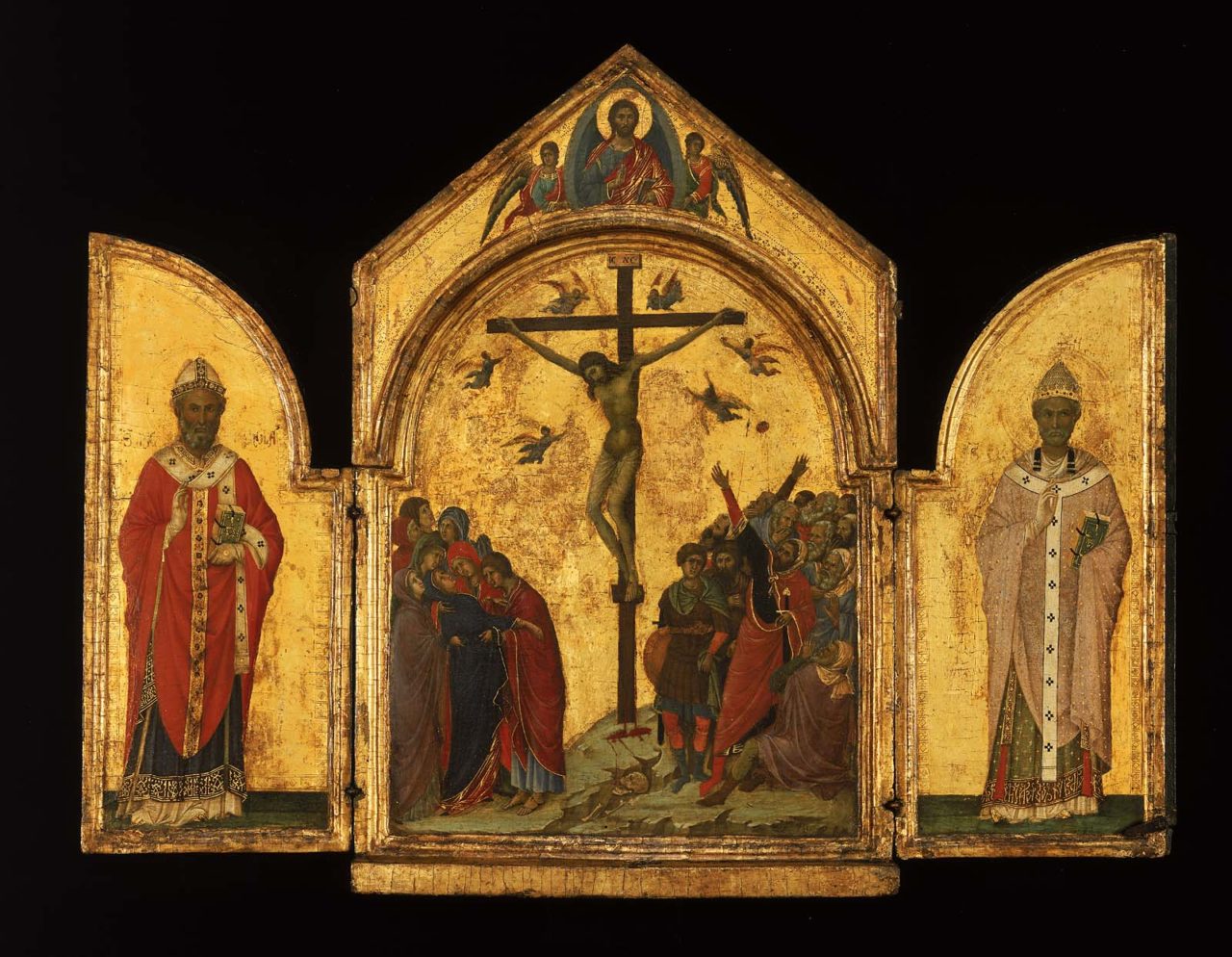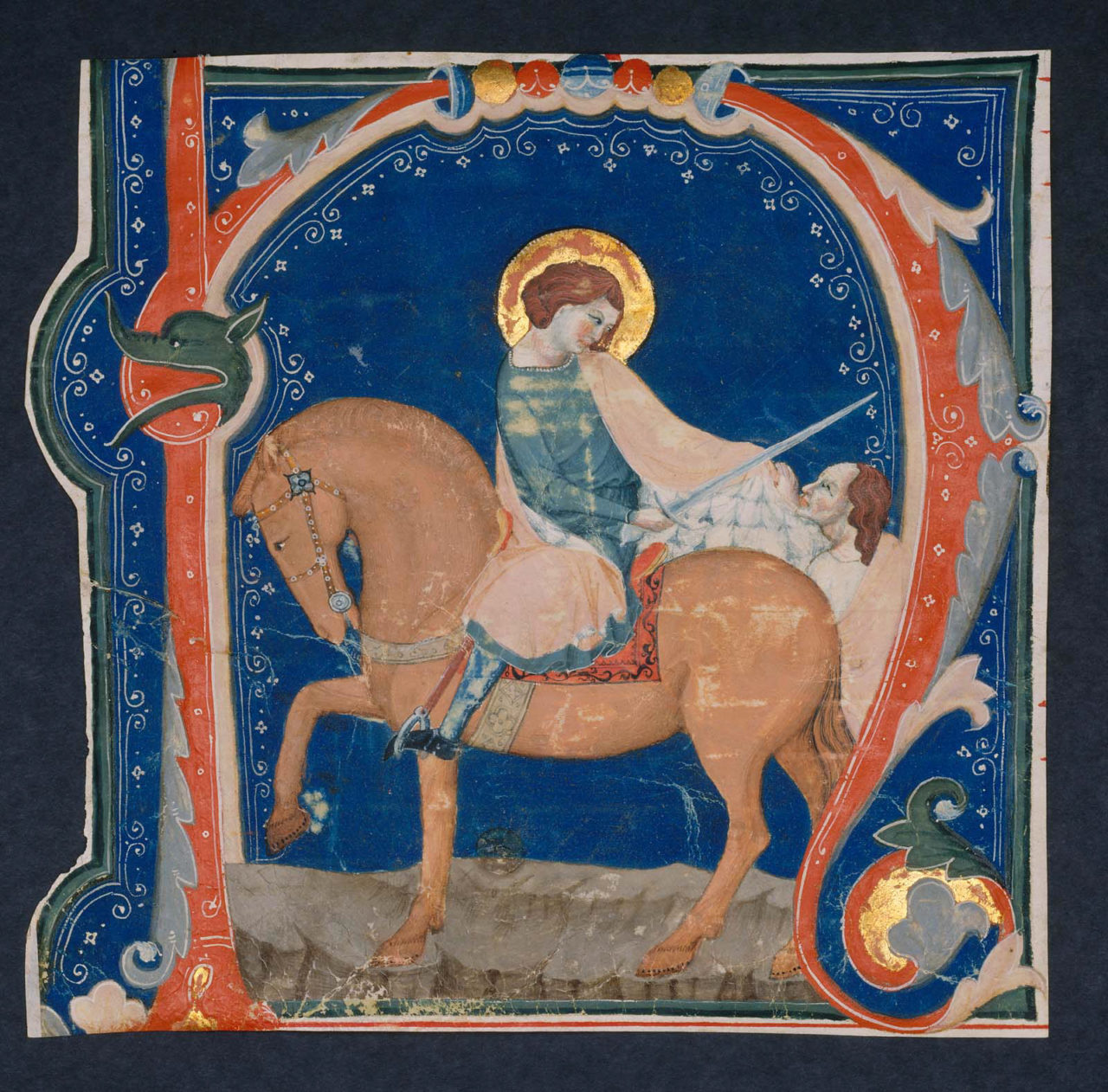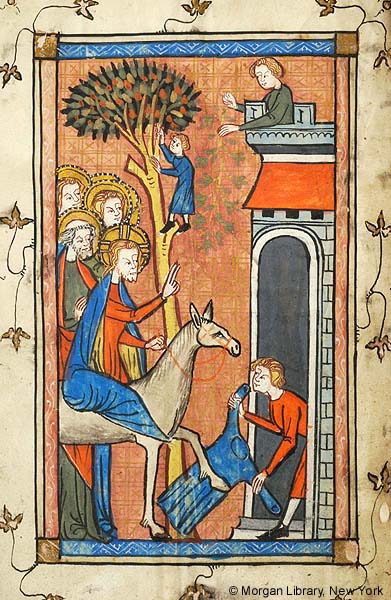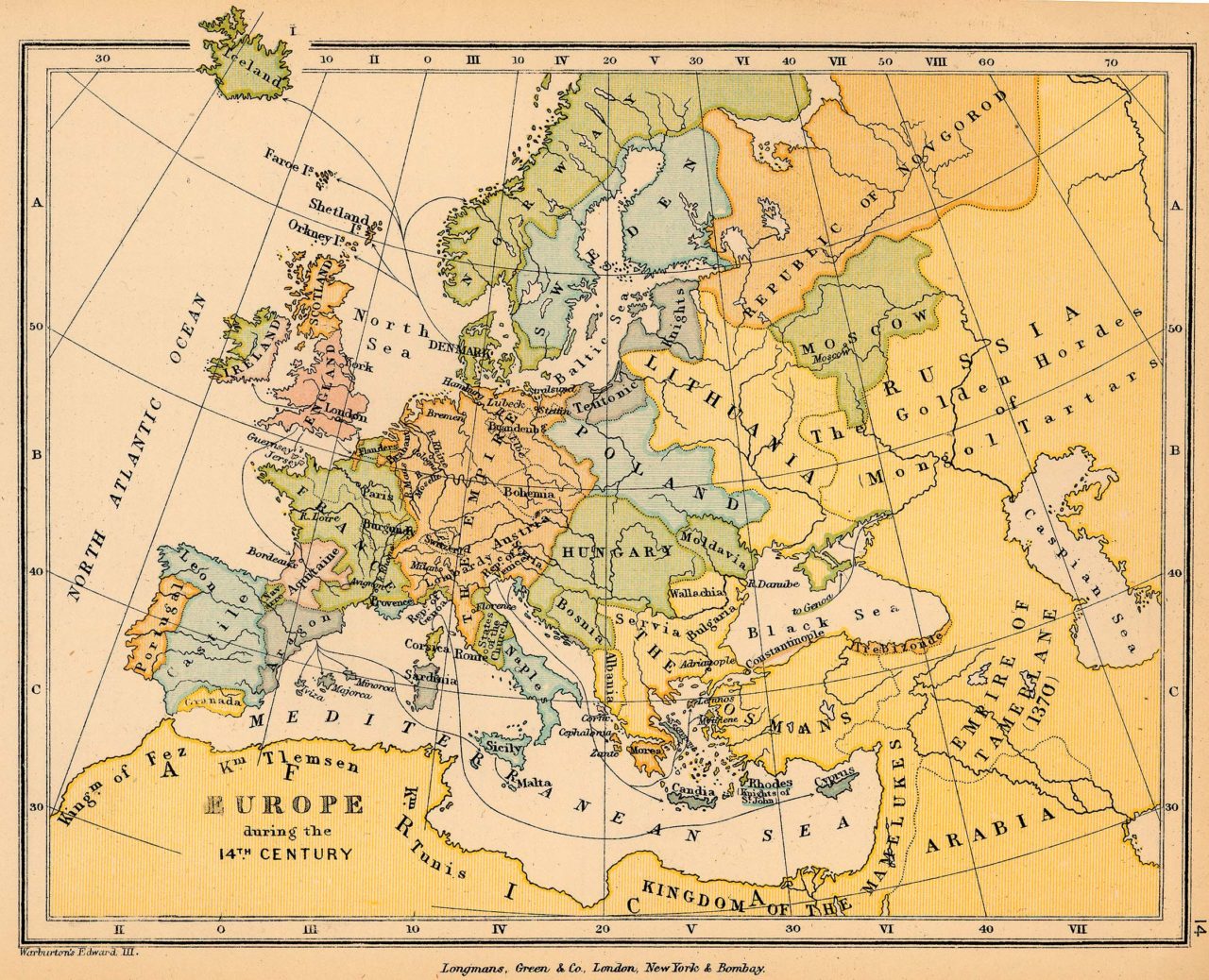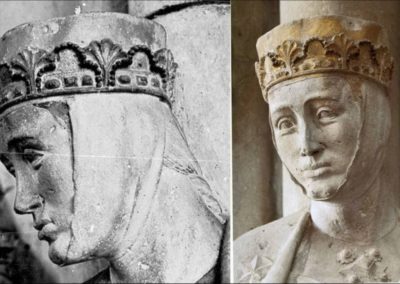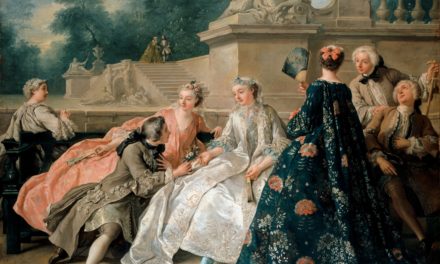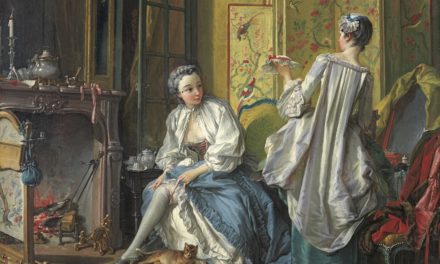OVERVIEW
Womenswear
“Wool was the most important material for clothing, due to its numerous favorable qualities, such as the ability to take dye and its being a good insulator. This century saw the beginnings of the Little Ice Age, and glazing was rare, even for the rich (most houses just had wooden shutters for the winter). Trade in textiles continued to grow throughout the century, and formed an important part of the economy for many areas from England to Italy. Clothes were very expensive, and employees, even high-ranking officials, were usually supplied with, typically, one outfit per year, as part of their remuneration.”
Fig. 1 - Artist unknown (German). Great Heidelberg manuscript, 1305-1340. Parchment, cover color miniatures; 35 x 25 cm. Heidelberg: University Library Heidelberg, 12790. Source: University Library Heidelberg
Fig. 2 - Goro di Gregorio (Italian, 12??–1334). Enthroned Virgin, first half 14th century. Terracotta; 44.8 x 25.4 x 24.1 cm (17 5/8 x 10 x 9 1/2 in). New York: Metropolitan Museum of Art, 1998.214. The Cloisters Collection and Rogers Fund, 1998. Source: The Met
Fig. 3 - Designer unknown (French). Purse, early 14th century. Silk, linen, gold leaf; 14 x 15.2 cm (5 1/2 x 6 in). New York: Metropolitan Museum of Art, 64.101.1364. Gift of Irwin Untermyer, 1964. Source: The Met
Fashion Icon:
Menswear
“Woodblock printing of cloth was known throughout the century, and was probably fairly common by the end; this is hard to assess as artists tended to avoid trying to depict patterned cloth due to the difficulty of doing so. Embroidery in wool, and silk or gold thread for the rich, was used for decoration. Edward III established an embroidery workshop in the Tower of London, which presumably produced the robes he and his Queen wore in 1351 of red velvet ’embroidered with clouds of silver and eagles of pearl and gold, under each alternate cloud an eagle of pearl, and under each of the other clouds a golden eagle, every eagle having in its beak a Garter with the motto hony soyt qui mal y pense embroidered thereon.’
Silk was the finest fabric of all. In Northern Europe, silk was an imported and very expensive luxury. The well-off could afford woven brocades from Italy or even further afield. Fashionable Italian silks of this period featured repeating patterns of roundels and animals, deriving from Ottoman silk-weaving centres in Bursa, and ultimately from Yuan Dynasty China via the Silk Road.”
Fig. 1 - Duccio di Buoninsegna (Italian, circa 1278-1319). The Crucifixion; the Redeemer with Angels; Saint Nicholas; Saint Gregory, 1311-1318. Tempera on panel; center overall, 61.0 x 39.4 cm ; left overall, 45.1 x 19.4 cm ; right overall, 45.1 x 20.2 cm (center overall, 24 x 15 1/2 in; left overall, 17 3/4 x 7 5/8 in; right overall, 17 3/4 x 7 15/16 in). Boston: Museum of Fine Arts, 45.880. Grant Walker and Charles Potter Kling Funds. Source: MFA Boston
Fig. 2 - Attributed to Memmo di Filippuccio (Italian, early 14th century). Initial "H" with St. Martin and the Beggar (Cutting from an Antiphonary), early 14th century. Tempera, ink and gold on parchment; 17.6 x 18.2 cm (6 15/16 x 7 3/16 in). Boston: Museum of Fine Arts, 41.908. Gift of Mrs. Edward Jackson Holmes. Source: MFA Boston
CHILDREN’S WEAR
Fig. 1 - Unknown (French). Standing Virgin and Child, ca. 1300–1350. Stone, paint; 141 x 44.8 x 26.7 cm (55 1/2 x 17 5/8 x 10 1/2 in). New York: Metropolitan Museum of Art, 25.120.213. The Cloisters Collection, 1925. Source: The Met
Fig. 2 - Unknown (French). Lectionary, ca. 1325. Parchment; 26 x 17 cm. New York: Morgan Library & Museum, MS M.512. Purchased by J. Pierpont Morgan (1837-1913) in 1912.. Source: The Morgan
References:
- “1300–1400 in European Fashion.” Wikipedia, October 26, 2017. https://en.wikipedia.org/w/index.php?title=1300%E2%80%931400_in_European_fashion&oldid=80726837
Historical Context
Wikipedia:
Rulers:
- England:
- King Edward I (1272-1307)
- King Edward II (1307-1327)
- King Edward III (1327-1377)
- France:
- King Philip IV (1285-1314)
- King Louis X (1314-1316)
- King John I (1316)
- King Philip V (1316-1322)
- King Charles IV (1322-1328)
- King Philip VI (1328-1350)
- Spain (Castilian Monarchs):
- King Ferdinand IV (1295-1312)
- King Alfonso XI (1312-1350)
Europe during the 14th Century. Source: GifeX
Events:
- 1321 – Dante’s Divina Comedia
- 1346-48 – Black Death
Timeline Entries
Primary/Period Sources
Resources for Fashion History Research
To discover primary/period sources, explore the categories below.
Have a primary source to suggest? Or a newly digitized periodical/book to announce? Contact us!
Digitized Primary/Period Sources
Secondary Sources
Also see the 14th-century overview page for more research sources… or browse our Zotero library.

